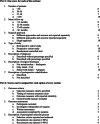Survivorship and clinical outcomes of proximal femoral replacement in non-neoplastic primary and revision total hip arthroplasty: a systematic review
- PMID: 34749680
- PMCID: PMC8576938
- DOI: 10.1186/s12891-021-04711-w
Survivorship and clinical outcomes of proximal femoral replacement in non-neoplastic primary and revision total hip arthroplasty: a systematic review
Abstract
Background: Several studies have evaluated the survivorship and clinical outcomes of proximal femoral replacement (PFR) in complex primary and revision total hip arthroplasty with severe proximal femoral bone loss; however, there remains no consensus on the overall performance of this implant. We therefore performed a systematic review of the literature in order to examine survivorship and complication rates of PFR usage.
Methods: A systematic review of the literature according to the Preferred Reporting Items for Systematic Reviews and Meta-Analyses guidelines was performed. A comprehensive search of PubMed, MEDLINE, EMBASE, and the Cochrane Database of Systematic Reviews was conducted for English articles using various combinations of keywords.
Results: In all, 18 articles met the inclusion criteria. A total of 578 PFR were implanted. The all-cause reoperation-free survivorship was 76.6%. The overall complication rate was 27.2%. Dislocation was the most common complication observed and the most frequent reason for reoperation with an incidence of 12.8 and 7.6%, respectively. Infection after PFR had an incidence of 7.6% and a reoperation rate of 6.4%. The reoperation rate for aseptic loosening of the implant was 5.9%. Overall, patients had improved outcomes as documented by postoperative hip scores.
Conclusion: PFR usage have a relatively high complication rate, however, it remains an efficacious treatment option in elderly patients with osteoporotic bone affected by severe proximal femoral bone loss. Modular designs have shown reduced dislocations rate and higher survivorship free from dislocation. However, PFR should only be used as salvage procedure when no other reconstruction options are available.
Keywords: Bone defect; Femoral bone loss; Femoral reconstruction; Femoral revision; Proximal femoral arthroplasty; Proximal femoral replacement; Revision hip arthroplasty; Total hip arthroplasty.
© 2021. The Author(s).
Conflict of interest statement
The authors have no conflicts of interest to declare that are relevant to the content of this article. No benefits in any form have been received or will be received from a commercial party related directly or indirectly to the subject of this article.
Figures
Similar articles
-
Survivorship and Clinical Outcomes of Constrained Acetabular Liners in Primary and Revision Total Hip Arthroplasty: A Systematic Review.J Arthroplasty. 2021 Aug;36(8):3028-3041. doi: 10.1016/j.arth.2021.04.028. Epub 2021 Apr 30. J Arthroplasty. 2021. PMID: 34030877
-
Survivorship and Clinical Outcomes of Custom Triflange Acetabular Components in Revision Total Hip Arthroplasty: A Systematic Review.J Arthroplasty. 2019 Oct;34(10):2511-2518. doi: 10.1016/j.arth.2019.05.032. Epub 2019 May 29. J Arthroplasty. 2019. PMID: 31213338
-
Proximal femoral replacement in contemporary revision total hip arthroplasty for severe femoral bone loss: a review of outcomes.Bone Joint J. 2017 Mar;99-B(3):325-329. doi: 10.1302/0301-620X.99B3.BJJ-2016-0822.R1. Bone Joint J. 2017. PMID: 28249971
-
Proximal femoral replacement in non-oncologic patients undergoing revision total hip arthroplasty.Int Orthop. 2019 Oct;43(10):2227-2233. doi: 10.1007/s00264-018-4220-4. Epub 2018 Nov 10. Int Orthop. 2019. PMID: 30415464
-
Modern Proximal Femoral Replacement in Revision Total Hip Arthroplasty for Nononcologic Indications.J Arthroplasty. 2022 Aug;37(8S):S958-S963. doi: 10.1016/j.arth.2022.02.057. Epub 2022 Feb 18. J Arthroplasty. 2022. PMID: 35189288
Cited by
-
Comparison between gaits after a medial pivot and posterior stabilized primary total knee arthroplasty: a systematic review of the literature.Arthroplasty. 2023 Mar 17;5(1):15. doi: 10.1186/s42836-023-00165-8. Arthroplasty. 2023. PMID: 36927464 Free PMC article. Review.
-
Simultaneous Bilateral Total Hip Arthroplasty with Straight-Stems and Short-Stems: Does the Short One Do a Better Job?J Clin Med. 2023 Jan 29;12(3):1028. doi: 10.3390/jcm12031028. J Clin Med. 2023. PMID: 36769676 Free PMC article.
-
Adipose- and bone marrow-derived stromal cells reduce pain in patients with knee osteoarthritis but do not substantially improve knee functionality: an updated systematic review and meta-analysis.Eur J Orthop Surg Traumatol. 2025 May 23;35(1):214. doi: 10.1007/s00590-025-04322-4. Eur J Orthop Surg Traumatol. 2025. PMID: 40407910 Free PMC article. Review.
-
Proximal femoral replacement with locking plate for massive bone loss: a case report.SICOT J. 2025;11:29. doi: 10.1051/sicotj/2025024. Epub 2025 May 12. SICOT J. 2025. PMID: 40354518 Free PMC article.
-
Predictive Value of the C-Reactive Protein to Albumin Ratio in 30-Day Mortality after Hip Fracture in Elderly Population: A Retrospective Observational Cohort Study.J Clin Med. 2023 Jul 7;12(13):4544. doi: 10.3390/jcm12134544. J Clin Med. 2023. PMID: 37445579 Free PMC article.
References
-
- Malahias M-A, Mancino F, Gu A, Adriani M, De Martino I, Boettner F, et al. Acetabular impaction grafting with mesh for acetabular bone defects: a systematic review. Hip Int. 2020. 10.1177/1120700020971851. - PubMed
Publication types
MeSH terms
LinkOut - more resources
Full Text Sources
Medical
Miscellaneous



